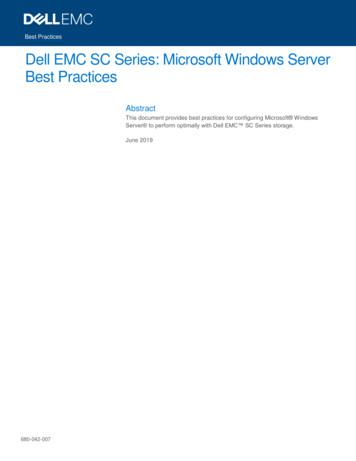70-744: Securing Windows Server 2016 Course Overview
nistering WSUSApproving UpdatesDemo - Installing and Configuring WSUSChapter 04 ReviewChapter 05 - Auditing and Advanced Threat AnalyticsTopic A: Configuring Auditing for Windows Server 2016Overview of AuditingThe Purpose of AuditingTypes of EventsAuditing GoalsAuditing File and Object AccessDemo - Configuring AuditingTopic B: Advanced Auditing and ManagementAdvanced AuditingAdvanced Auditing SubcategoriesDynamic AuditingEvent Log SubscriptionsAudit Collection Services (ACS)Demo - Configuring Event ForwardingAuditing with Windows PowerShellDemo - Using PowerShell with Audit LogsTransaction LoggingModule LoggingScript Block LoggingDemo - Configuring PowerShell LoggingTopic C: Deploying and Configuring ATAOverview of ATAUsage ScenariosDeployment RequirementsATA GatewaysPort MirroringConfiguring ATA CenterTopic D: Deploying and Configuring Operations Management SuiteIntroduction to Operations Management SuiteDeployment OverviewOMS SolutionsInstalling OMSOMS SolutionsChapter 05 Review1h 28mChapter 06 - Securing the InfrastructureTopic A: Secure the Virtualization InfrastructureIntroduction to Guarded FabricHost Guardian ServicePreparing HGS NodesInstalling and Configuring HGSAttestation and EncryptionAttestation Methods44m
Initializing HGSConfiguring HGS ClientsTopic B: Deploying Security BaselinesSecurity Compliance Manager (SCM)SCM RequirementsDemo - Installing SCMDemo - Configuring and Deploying Security BaselinesTopic C: Deploying Nano ServerPlanning for Nano ServerUnderstanding Nano Server RolesInstalling Nano Server RolesNano Server InstallationInstallation StepsChapter 06 ReviewChapter 07 - Configuring Data ProtectionTopic A: Planning and Implementing File EncryptionIntroducing Encrypting File SystemEFS FeaturesEncryption and DecryptionRecovering EFS FilesDemo - Using EFSTopic B: Planning and Implementing BitLockerOverview of BitLockerBitLocker and TPMsBitLocker RequirementsTools for Configuring and Managing BitLockerDeploying BitLockerDemo - Deploying BitLockerBitLocker on Hyper-V VMsBitLocker and CSVsEnabling BitLocker for CSVNetwork UnlockNetwork Unlock ProcessBitLocker RecoveryMicrosoft BitLocker Administration and Monitoring (MBAM)Chapter 07 Review1h 4mChapter 08 - Advanced File Server ManagementTopic A: Using File Server Resource ManagerCapacity ManagementStorage ManagementIntroduction to FSRMStorage Management with File Server Resource ManagerOverview of FSRMInstalling and Configuring FSRMDemo - Installing and Configuring FSRMQuota ManagementDemo - Create and Manage Quotas1h 55m
File ScreeningUsing File GroupsExceptions and TemplatesDemo - Implementing File ScreeningStorage ReportsReport TasksDemo - Generating Storage ReportsAutomatic File ManagementTopic B: Implementing Classification and File Management TasksFile ClassificationClassification RulesDemo - Configure File ClassificationFile Management TasksTopic C: Working with Dynamic Access ControlOverview of Dynamic Access ControlDynamic Access Control ScenariosDAC TechnologiesUnderstanding IdentityUnderstanding ClaimsTypes of ClaimsCentral Access PoliciesPolicy ComponentsDAC PrerequisitesDemo - Implementing DACChapter 08 ReviewChapter 09 - Securing the Network InfrastructureTopic A: Using the Windows Firewall with Advanced SecurityTypes of FirewallsWell-Known PortsHost-Based FirewallNetwork ProfilesConfiguring the Windows FirewallDemo - Working with the Windows FirewallTopic B: Datacenter FirewallNetwork ControllerDatacenter FirewallNetwork Security GroupsScenarios for Datacenter FirewallTopic C: Utilizing IP SecurityOverview of IP SecurityIPSec ProtocolsIPSec Usage ScenariosIPSec Configuration ToolsConnection Security RulesUnderstanding Rule TypesRule EndpointsAuthentication SettingsAuthentication Methods2h 14m
Encryption SettingsMonitoring ConnectionsDemo - Implementing IPSecTopic D: Configuring Advanced DNS SettingsManaging DNS ServicesOptimizing DNS Name ResolutionThe GlobalNames ZoneImplementing DNS SecurityDNS Security (DNSSEC)Implementing DNSSECDemo - Configuring DNSSECIntroducing DNS PoliciesImplementing DNS PoliciesRRL FeatureDemo - Configuring DNS PoliciesTopic E: Monitoring Network TrafficMicrosoft Message AnalyzerDemo - Using Microsoft Message AnalyzerTopic F: Securing SMB TrafficSMB 3.1.1 Protocol SecuritySMB Encryption RequirementsEncrypting SMB SharesDisabling Support for SMB 1.0Chapter 09 ReviewCourse ClosureTotal Duration: 13h 46m
Chapter 05 - Auditing and Advanced Threat Analytics 1h 28m Topic A: Configuring Auditing for Windows Server 2016 Overview of Auditing The Purpose of Auditing Types of Events Auditing Goals Auditing File and Object Access Demo - Configuring Auditing Topic B: Advanced Auditing and Management Advanced Auditing
The Windows The Windows Universe Universe Windows 3.1 Windows for Workgroups Windows 95 Windows 98 Windows 2000 1990 Today Business Consumer Windows Me Windows NT 3.51 Windows NT 4 Windows XP Pro/Home. 8 Windows XP Flavors Windows XP Professional Windows XP Home Windows 2003 Server
A computer with at least a 450MHz Pentium CPU with 128 MB of RAM, running Windows 2000, Windows XP, Windows Server 2003, Windows Vista, Windows Server 2008, Windows 7, Windows 8/8.1, Windows 10, Windows Server 2012, Windows Server 2016 or Windows Server 2019 platforms. Instal
Several LTSC Windows Server versions that are supported with SC Series are in various phases of mainstream or extended Microsoft support: Windows Server 2008 R2, Windows Server 2012, Windows Server 2012 R2, Windows Server 2016, and Windows Server 2019. Microsoft extended support for Windows Server 2008 R2 is scheduled to end in January 2020.
AutoCAD 2000 HDI 1.x.x Windows 95, 98, Me Windows NT4 Windows 2000 AutoCAD 2000i HDI 2.x.x Windows 95, 98, Me Windows NT4 Windows 2000 AutoCAD 2002 HDI 3.x.x Windows 98, Me Windows NT4 Windows 2000 Windows XP (with Autodesk update) AutoCAD 2004 HDI 4.x.x Windows NT4 Windows 2000 Windows XP AutoCAD 2005 HDI 5.x.x Windows 2000 Windows XP
When provisioning a Windows Server for a specific role there are additional items to consider for further securing the server. When planning and provisioning your server layout, designate one primary purpose per server. Whenever possible, designate one server as the database server, one server as the web server, and one server as the file server.
Web Server Hardware Processor - Fast Multi Core or Multi Processor Memory - 4 gig Disk - 500MB Operating System Windows Server 2008 Windows Server 2008 R2 Windows Server 2012 Windows Server 2012 R2 Windows Server 2016 Windows Server 2019 Windows Server 2022 Software IIS 7, 7.5, 8, 8.5 & 10
- 32 & 64 bit Windows 7, Windows 8 & Windows 10 - 32 & 64 bit Windows 2008 Server - Windows 2008 Server R2 - Windows Server 2012 - Windows Server 2012 R2 - Windows Server 2016 NOTE: Microsoft .Net Framework 4.5 is required on all o
Microsoft SQL Server 2012 (all editions except LocalDB) Microsoft SQL Server 2008 Express or Microsoft SQL Server 2008 R2 Express Microsoft SQL Server 2016 Workstation Requirements 32 or 64-bit editions of Windows XP SP3, Windows 7, Windows 8.1, and Windows 10. 32 or 64-bit editions of Windows Server 2003, Windows Server 2008 R2, Windows Server .























